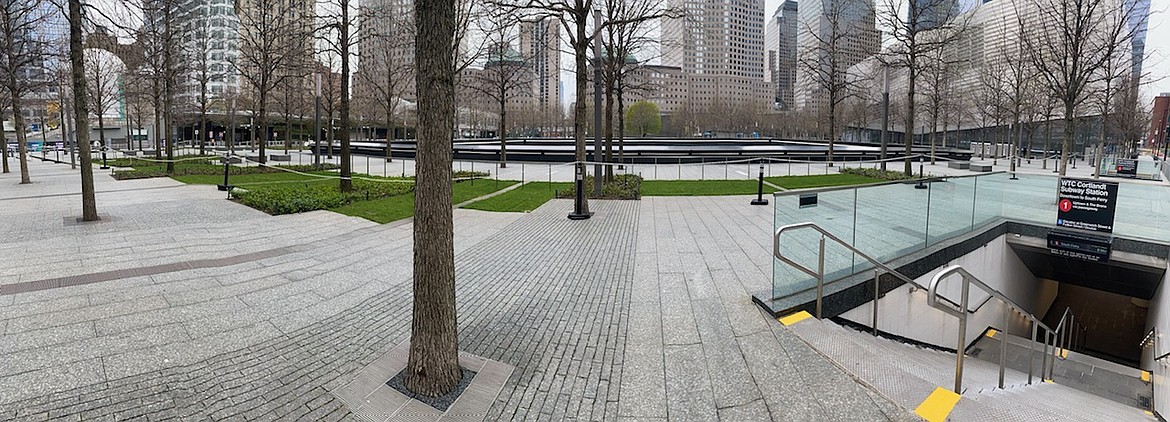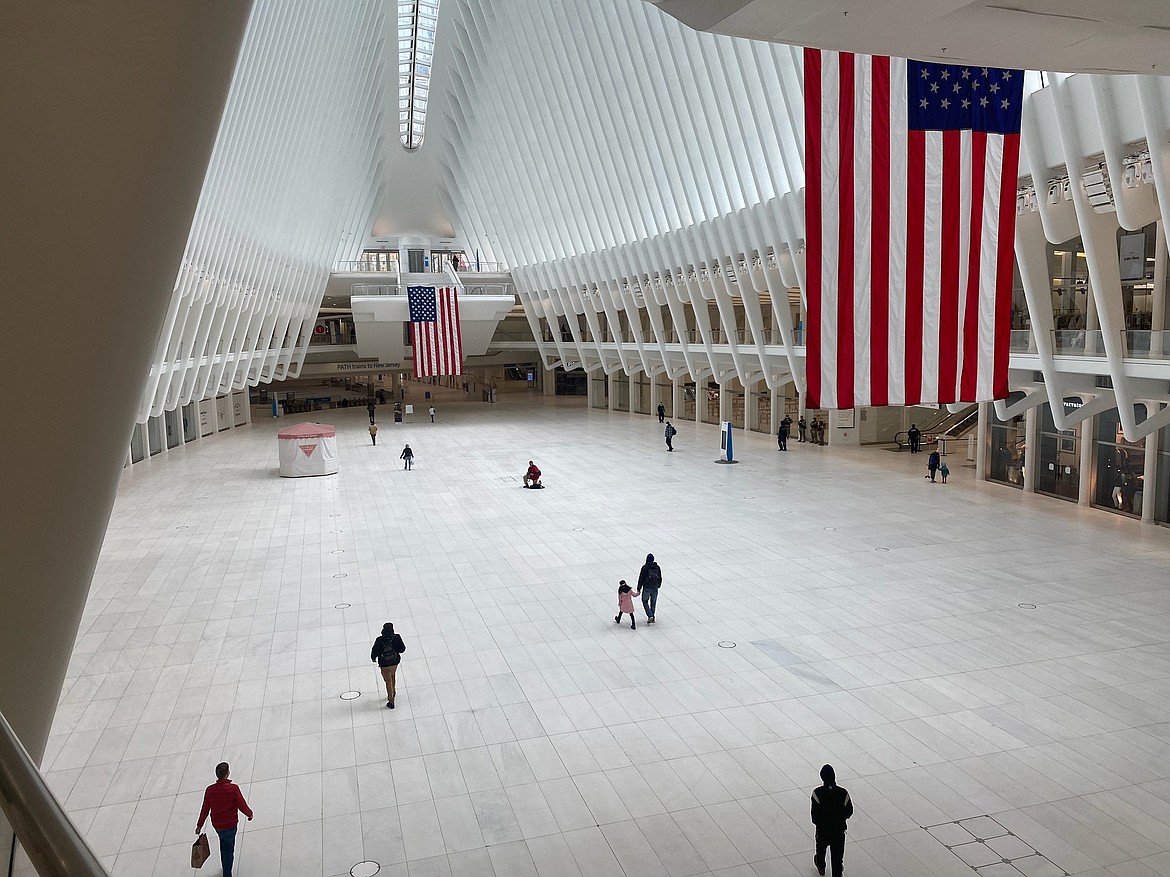‘It was a wildfire’
Cd’A nurse in epicenter of New York’s COVID crisis
Levi Wenglikowski is not enjoying the typical New York City tourist experience.
“My daughter was going to be the lead in the school play,” the Coeur d’Alene resident lamented Tuesday. “She’d come over here before all this, and she got to see the shows here [on Broadway]. I’ve been taking pictures of what it looks like now, and it’s just unbelievable. All the theaters are closed. All the streets are empty.”
Those streets are empty, of course, because of the coronavirus pandemic that has swept the world but managed to fixate on New York City, the most populated 300 square miles in America. New York Gov. Andrew Cuomo’s stay-at-home order — not unlike Idaho Gov. Brad Little’s March 25 decree — turned one of the most bustling and cosmopolitan cities in the world into a ghost town.
“The train takes you right to One World Trade Center,” Wenglikowski said. “I walked three blocks before I even saw another person. And when I got there, there were only a few people walking around. The eeriness of being in that spot — with only a few people around — was surreal.”
Ground Zero holds a unique connection in Wenglikowski’s soul. His daughter — Taylor, now a senior at Coeur d’Alene High School — was born Sept. 14, 2001, just days after the attacks on the World Trade Center. The fact that Levi is now spending part of his time at the epicenter of another national tragedy has left him breathless.
“I’ve never seen anything like this,” he admitted. “No one has.”
If you’re thinking Wenglikowski picked the wrong time to visit the Big Apple, you’d be wrong. The Northwest Specialty Hospital and former 10-year veteran at Kootenai Health’s Intensive Care Unit was furloughed from the former after a mass cancellation of elective surgeries. With a new gap in his schedule, he picked up a month of shifts at NYU Winthrop Hospital on Long Island.
“This is crazy,” he said. “I don’t even have words to explain how bad it is. I’ve been working different units each day, but all the patients are so sick.”
Wenglikowski is among the first of several waves of traveling nurses, doctors, techs and specialists from across the country to visit urban pandemic epicenters like New York, Boston and New Orleans.
“When I came here, they were still trying to just survive,” noted Wenglikowski, who just started his third week at NYU Winthrop. “All the nurses, all the doctors: They were just in survival mode, just trying to do everything they could.”
The husband and father of three cited what’s become a hot-button piece of equipment to demonstrate how even good news was bleak: ventilators.
“They initially had 186 ventilators,” he said. “That’s not what they owned; that’s what they had brought in. In our morning huddle the other day, [he was told] that number of vents we were using was down into the 160s. And at first, you’d think, ‘That’s good news. We have fewer patients who need ventilators.’ But the day before, we had 10 deaths in the hospital, which freed up some of that equipment. It’s terrible.”
Wenglikowski said he’s seeing dramatic rationing of equipment in a region stretching resources to try and make ends meet. His hospital-issued gowns, gloves and masks last all day, regardless of how many COVID-19-positive patients he meets. That personal protective equipment is not the only commodity in short supply.
“We’re just running out of the medicine we need,” he said.
Wenglikowski said New York hospitals like NYU Winthrop are running out of another commodity during the COVID-19 pandemic: room.
“This hospital I’m working at originally had five separate ICUs, including neonatal,” Wenglikowski said. “Now it’s pretty much just one big ICU.”
NYU Winthrop, he said, retrofit conference rooms with oxygen and suction, creating negative pressure rooms out of spaces once designed for meetings. Cuomo’s declaration included a mandate for hospitals throughout New York to expand their bed capacity.
Wenglikowski estimated NYU Winthrop’s 591-bed capacity is now somewhere over 800. Last week, the hospital brought in a third refrigeration truck as a grim reminder of COVID-19’s potential: an extra space to store bodies.
Despite the chaos he’s seen, Wenglikowski said health care professionals in New York are starting to see some encouraging signs.
“The nice thing I’ve seen here, every single day the governor and the mayor [Bill de Blasio] have been giving updates. Each day, they give out new numbers, and the feeling is this has plateaued. It took us six weeks to get to this point. I think there is some light at the end of the tunnel, but it’s a long way off.”
Wenglikowski will come home on or around May 3, but even then, he’ll be away from home, self-isolating in seclusion for two weeks as a precaution before he returns to his family. He said he hopes he leaves the horrors he’s seen in New York behind him.
“To say that it’s going to happen in Idaho, I can’t tell you that,” he said. “In Idaho, we don’t live in close proximity to one another, but we do things in close proximity to one another, and that’s how you catch it. I hate the thought of everyone being affected by this. But those inconveniences are short-term. If people can realize it’s short-term, it’ll pay off in the long-term.
“If we can suck it up and just do this, we hopefully won’t ever have to do this again.”





